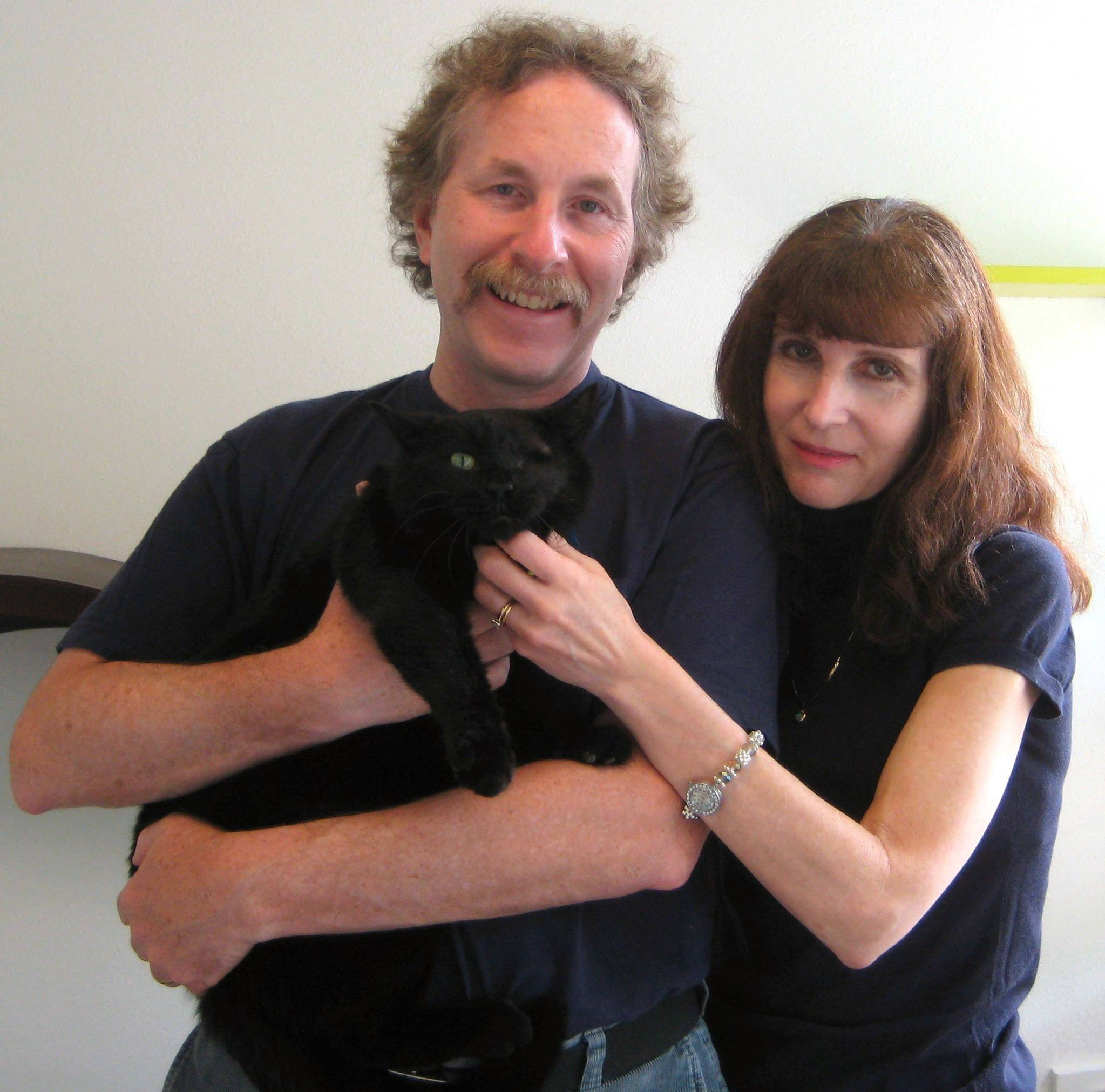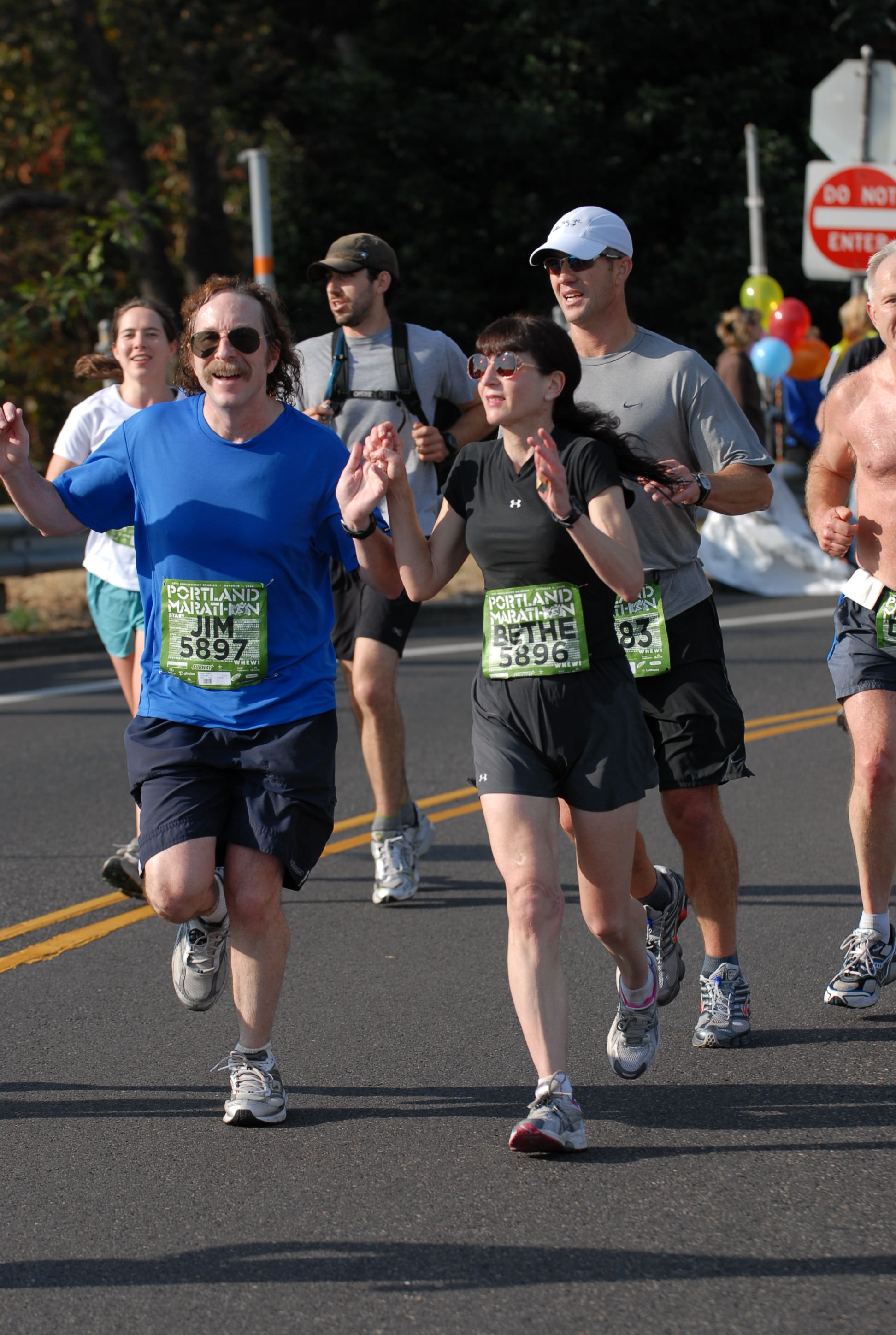“My favorite thing about biophysics remains what piqued my interest initially: its interdisciplinary nature, which brings together not just biology and physics, but also chemistry and mathematics,” says James R. Abney, partner at Kolisch Hartwell, PC, a law firm specializing in intellectual property law in Portland, Oregon. Abney’s parents, though not scientists themselves, diligently helped cultivate their son’s interest in the natural sciences. Abney’s father in particular encouraged him in a very hands-on way. “He was, and still is, someone who knew how to do everything practical: auto and electronics repair, masonry, plumbing, carpentry, sewing—the things you learned growing up during the Depression in rural Texas and spending World War II in the Pacific,” Abney says. “He taught me how to use my hands, to take things apart and understand how they work, and just generally not to be afraid of things. It really affected my approach to science and to life.”
After high school, Abney majored in physics and biology at the University of California, Irvine. An undergraduate research experience working on biophysical studies of ion channels in Michael Cahalan’s lab opened his eyes in earnest to biophysics as a field. “Working with Michael was my first personal interaction with a biophysicist, and with graduate students and postdocs,” Abney says. Another attraction to the field was that Bethe Scalettar, now Abney’s wife and a professor of physics at Lewis & Clark College, a small liberal arts school in Portland, was also becoming interested in biophysics. Together they attended graduate school at the University of California, Berkeley, where Abney joined John Owicki’s lab to work on “elucidating the effects of molecular crowding on organization and dynamics in biological systems.” Using theory and computer simulations, he modeled aspects of protein organization and diffusion in biological membranes, applying the results to systems such as gap junctions. “Jim was an unalloyed joy to work with,” says Owicki, now an independent consultant. “He was smart, diligent, and an excellent writer.” Abney continued this interest as a postdoc, using fluorescence spectroscopy and microscopy to study the effects of crowding in organelles such as the mitochondrion and nucleus.
Biophysics is a great background for intellectual property law. Clients, especially in biotechnology, rarely fall neatly in one discipline, so an interdisciplinary background is very helpful.
-Abney
Abney didn’t intend to become a lawyer. “My transition to patent law occurred mostly by chance,” he says. After completing their postdoctoral fellowships, Abney and his wife hunted for research-oriented faculty positions that could accommodate both of them. “My wife and I initially sought to capitalize on our common backgrounds and interests by sharing a position at a research institution,” Abney says. “However, that concept was somewhat unusual at the time—more than twenty years ago—and consequently was a difficult sell.” Not only were the institutions not ready for this brand of trailblazing; the field itself was lagging behind. “Interdisciplinary fields such as biophysics were less in vogue, and departments that would now welcome biophysicists were less inviting,” says Abney. They began to think outside the research-career box. Then Scalettar received an offer from Lewis & Clark College, which included full tuition remission for Abney at the Northwestern School of Law of Lewis & Clark College. “I had never considered a career in law nor, to my knowledge, even spoken with a lawyer,” says Abney. However, impressed by the trappings of law in Washington, DC, while attending a Biophysical Society Annual Meeting, and later inspired by Supreme Court Justice Harry Blackmun’s talk at the University of California, San Francisco, Abney was persuaded. His strong scientific background made patent law a logical and gratifying focus. “My biophysics background has been especially valuable in intellectual property law because it has allowed me to work across a broad technology spectrum from biology through chemistry to physics,” he says. He has even helped Owicki with a patent application or two. “When Jim told me that he was going to enter law school, I was at first surprised,” says Owicki. “Then I reflected on his excellent communication abilities—both writing and teaching—and I realized that these, together with his strong scientific background, would probably make him a great patent attorney. I was right.”
Though his law career began as a viable solution to the two-body problem, Abney has found, to his delight, that he both enjoys and excels at it. “I currently work very closely with several high-technology clients, mostly in the areas of biotechnology, orthopedics, and optics,” he says. “I prepare and prosecute patent applications in these and other areas, provide detailed opinions regarding patentability, infringement, and validity, draft license agreements and other contracts, and litigate disputes.” The job, while rewarding, comes with its own set of difficulties. “The work itself is very deadline intensive, often with a lot of money at stake, and even one mistake can be malpractice,” he says. “It also can be a challenge, as a scientist, to remember that there is not always a right or wrong answer, as evidenced by the plethora of five-to-four Supreme Court decisions.” Abney continues to be inspired by his work, however. “Our business is built around innovation,” he says. “Our clients are bright and enthusiastic. We work on cutting-edge technologies, before they are publicly disclosed or commercialized, helping our clients protect and commercialize their ideas using patents, trademarks, copyrights, and trade secrets.”
Even with a legion of looming deadlines, Abney makes attending the Biophysical Society Annual Meeting a priority. “The meetings help to establish a sense of community,” he says. “For example, I have always found it helpful to pick up the phone and give the right people a call when I have questions, and the introductions and friendships that I have made at the meetings have made that much easier.” Abney also gives talks at the meetings, typically to a rapt audience. “Jim’s thinking and speaking are unusually clear, orderly, and calm,” says former collaborator Daniel Axelrod, now Professor Emeritus at the University of Michigan. “I have attended his talks at the Biophysical Society meetings. His topic was complex and highly mathematical—crowded diffusion theory—but he had an uncanny ability to make it clear and interesting. He is one of the best science lecturers I have ever heard, on any topic.”
Neither Abney nor his wife harbors any career choice regrets. “We both miss aspects of the research environment but strongly believe that each of us is in the right place,” says Abney. They also miss collaborating scientifically. The pair co-authored a number of research papers, two reviews, and a spectroscopy article geared toward teaching. “Jim is a great collaborator, which is why we have worked together so extensively,” Scalettar says. “He is very thoughtful, patient, and diligent, and he is a true colleague who works for the common good.” The two are almost inseparable in their spare time, pursuing joint activities such as hiking, running marathons, watching old movies, and caring for their special-needs cats. “There are many facets to our relationship, but probably the most important is that we are best friends because our interests and beliefs are very similar,” Scalettar says.
For Abney, being open to and prepared for unlikely possibilities was key. “I would encourage young people to be flexible, as I have been,” he says, “and to keep their eyes open for opportunities unique to them and that they can do well and enjoy.” As Abney’s own career path illustrates, sometimes the right career choice is the unexpected one.